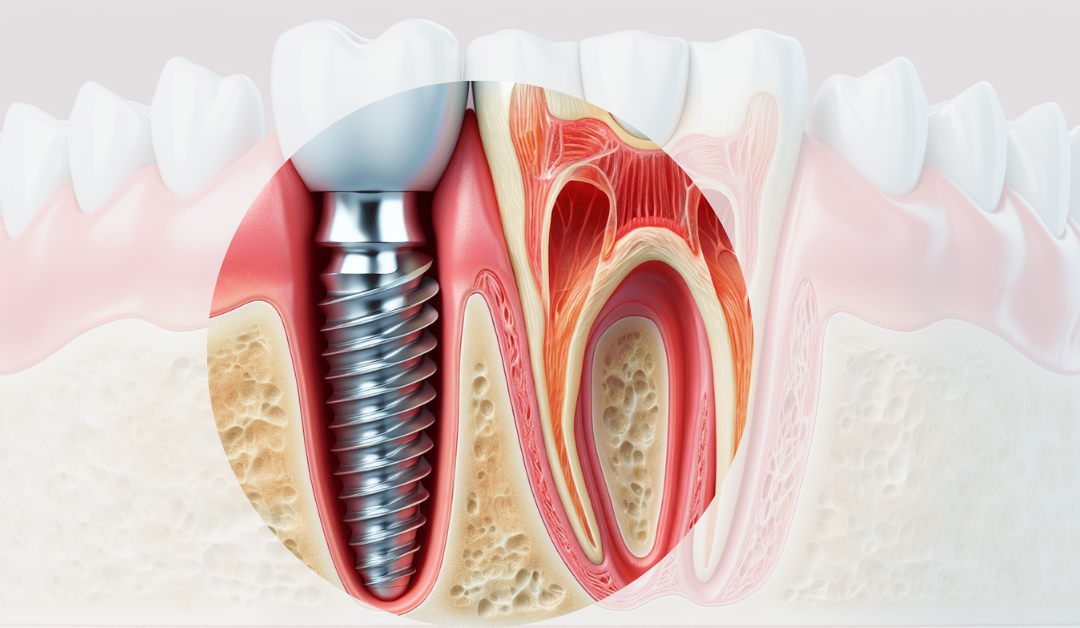Why Your Dental Implant Failed (Even Though Everything Looked Fine)You got a dental implant.
- The surgery went smoothly.
- The crown looked perfect.
- Your dentist said everything looked great.
So why does it feel like something’s wrong now?
- Maybe it’s sore when you chew.
- Maybe the crown feels “off” when your teeth come together.
- Maybe you were told there’s bone loss around the implant, or worse, the implant is failing
And the most frustrating part? No one can explain why.
But here’s the truth:
- It might not be the implant at all. It might be your bite.
- The Hidden Reason Implants Fail (That No One Talks About)
- Dental implants are amazing technology. But they don’t behave like natural teeth.
Natural teeth have a built-in shock absorber (called a periodontal ligament) that helps detect and balance pressure. Implants don’t. They’re fused directly to the bone—solid and unyielding.
So if your bite is slightly off, even just a little, the implant can take too much pressure in the wrong way. Over time, that stress builds up and causes problems like:
- Bone loss
- Loose screws or abutments
- Chipped or broken crowns
- Soreness, tension, or pain
- Complete implant failure
What Makes This Happen?
1. Implants Can’t “Feel” Pressure
Your brain doesn’t get the same feedback from an implant as it does from a natural tooth. So if you’re biting too hard on it, or grinding, it won’t send the same warning signs.
2. Your Bite Might Be Off
If the crown on your implant was designed like a natural tooth, it could be too wide or too tall, creating extra force every time you chew.
3. Grinding or Clenching (Even If You Don’t Know You Do It)
A huge number of people clench or grind their teeth, especially while sleeping, and they don’t even realize it. That extra pressure is one of the top reasons implants start to fail.
4. Forces Coming from the Wrong Direction
Implants can handle pressure from straight up and down (like chewing), but not well from the side (like sliding or grinding). If your bite is off, those sideways forces can damage the bone over time.
So What Can Be Done?
If you’re getting a dental implant, or already have one, here’s what can help protect your investment:
- Design the Crown Differently
Crowns on implants should be narrower and shaped to avoid extra pressure, especially in the back teeth. - Keep the Implant Out of Harm’s Way
Your implant shouldn’t be doing the heavy lifting when you move your jaw side-toside. That job belongs to your natural teeth. - Use Precision Bite Testing
A quick look with coloured paper isn’t always enough. Dentists can use more advanced tools like digital sensors to detect real bite pressure and timing. - Wear a Nightguard if Needed
If you grind or clench your teeth (even unknowingly), a custom-made nightguard or bite appliance can protect both your implant and your natural teeth - Follow Up After Placement
Your bite can shift slightly over time. Regular checkups and adjustments help ensure your implant continues to work comfortably and safely.
Final Thought: It’s Not About Strength. It’s About Balance.
Your implant might be made of titanium and porcelain, but if it’s placed into a bite that isn’t balanced, it doesn’t matter how strong it is.Implants don’t fail because they’re weak. They fail because they’re overloaded.
If your implant doesn’t feel right, or you’re considering getting one, make sure your dentist looks beyond the bone, and checks how your teeth, muscles, and jaw all work together.
Because your smile isn’t just about what you see.It’s about how everything functions behind the scenes.
Worried About an Implant? Thinking About Getting One?
At Smiles by Bis, we look deeper. We test your bite, screen for hidden pressure problems, and design implants that don’t just look good—they last.
– Written by Dr. Agatha Bis




